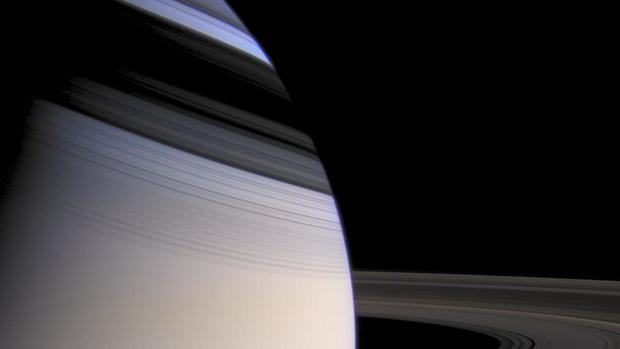Saturn spent billions of years without its rings, NASA says
Saturn's iconic rings may be relatively new in the cosmic scheme of things, scientists have determined. According to data gathered by NASA's Cassini spacecraft, the sixth planet from the sun may have existed for billions of years without them.
"The findings indicate that Saturn's rings formed between 10 million and 100 million years ago," NASA and the Jet Propulsion Laboratory at Cal Tech said in a press statement. That means Saturn's rings may have formed during a time when dinosaurs roamed the Earth.
That may seem like ages ago, but Saturn itself formed about 4.5 billion years ago. So the planet could've existed without its rings for an extremely long time — up to 4,490,000,000 years.
The conclusion was derived from measurements collected during Cassini's ultra-close orbits in 2017, near the end of the spacecraft's mission. "As the spacecraft was running out of fuel, it performed 22 dives between the planet and the rings," NASA said. "The dives allowed the spacecraft to act as a probe, falling into Saturn's gravity field, where it could feel the tug of the planet and the rings."
There were clues that Saturn's rings were younger, but scientists are just now determining how young. "To figure out the age of the rings, scientists needed to measure something else: the mass of the rings, or how much material they hold," NASA said.
They calculated the rings have much less mass than previously thought. Lower mass indicates a younger age, since the rings are made of ice chunks that accumulate more and more planetary debris over time.
"These measurements were only possible because Cassini flew so close to the surface in its final hours," said Burkhard Militzer, a professor of earth and planetary science at the University of California, Berkeley. "It was a classic, spectacular way to end the mission."
Data from Cassini is also helping to solve a long-running mystery: How long is a day on Saturn?
The question is trickier than it sounds. Because Saturn is a gas giant with no solid surface, there are no physical landmarks to track as it rotates, and it also has an unusual magnetic field that makes its rotation rate difficult to pin down, the Jet Propulsion Lab explains.
By studying wave patterns in the rings detected by Cassini, Christopher Mankovich, a graduate student in astronomy and astrophysics at University of California, Santa Cruz, determined that they respond to vibrations within the planet itself. Based on that, he developed models of Saturn's interior that allowed him to track its rotation.
The result? He calculated that one day on Saturn lasts precisely 10 hours, 33 minutes and 38 seconds.





